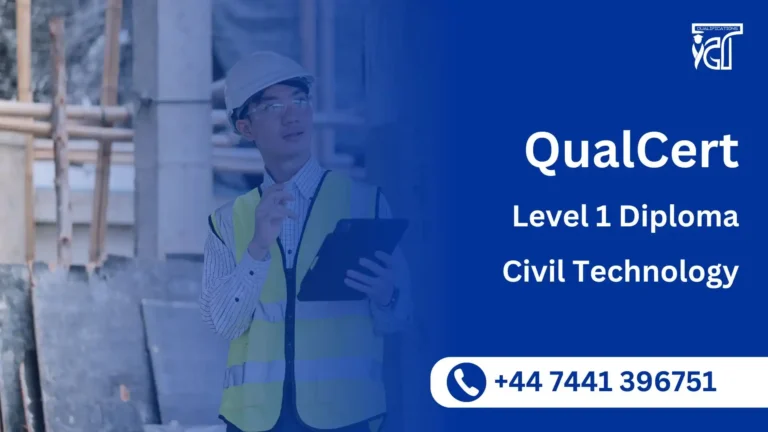The QualCert Level 2 Diploma in Quality Control (QC) Software is an entry-level qualification designed to equip learners with foundational knowledge and practical skills in software quality control and assurance. This program introduces essential concepts of quality standards, testing techniques, and compliance practices relevant to modern software development environments.
Learners will explore how to identify common software defects, assist in testing procedures, maintain documentation, and support quality assurance activities in real-world settings. The course emphasizes hands-on understanding of the software lifecycle, quality auditing basics, and the use of basic tools used in quality inspection and control.
Ideal for individuals starting a career in software quality assurance or those seeking to enhance their technical support skills, this diploma provides a solid platform for further progression in the software testing and quality field. Whether you are a school leaver or someone transitioning into the IT sector, this qualification will help you build confidence and competence in the principles of software QC.
QualCert Level 2 Diploma in Quality Control (QC) Software
The QualCert Level 2 Diploma in Quality Control (QC) Software comprises several study units designed to provide learners with a comprehensive understanding of QC principles and practices in the software sector. Below is the qualification structure, including the Total Qualification Time (TQT) 180, Guided Learning Hours (GLH) 120, and 30 Credits associated with the program.
| Unit Ref# | Unit Title | Credit | GLH | TQT |
| QC11008 – 1 | QC Software Process Implementation | 5 | 20 | 30 |
| QC11008 – 2 | Statistical Methods in QC Analysis | 5 | 20 | 30 |
| QC11008 – 3 | QC Risk Assessment and Mitigation | 5 | 20 | 30 |
| QC11008 – 4 | Automated QC Systems and AI Integration | 5 | 20 | 30 |
| QC11008 – 5 | Industry Best Practices in QC | 5 | 20 | 30 |
| QC11008 – 6 | Report Writing and Decision-Making Using QC Software | 5 | 20 | 30 |
GLH (Guided Learning Hours) and TQT (Total Qualification Time) are terms commonly used in vocational qualifications to help define the amount of time a learner is expected to spend on their studies.
1. GLH (Guided Learning Hours)
GLH refers to the number of hours a learner spends being directly taught, supervised, or supported during their course. This includes the time spent in activities such as:
- Classroom instruction
- Practical workshops
- One-on-one tutoring or mentoring sessions
- Online learning sessions with tutor support
In other words, GLH represents the time that learners are actively engaged with their instructors or learning activities.
2. TQT (Total Qualification Time)
TQT represents the total amount of time a learner is expected to invest in completing a qualification, including:
- GLH (Guided Learning Hours): Time spent on direct learning, as explained above.
- Self-Directed Learning: This includes time spent on independent study, research, assignment completion, preparation for exams, and any other work the learner does outside of direct teaching hours.
TQT is a broader measure that includes all the time required to achieve the qualification. It helps learners and employers understand the overall commitment required for the qualification.
Key Differences Between GLH and TQT:
- GLH focuses on direct learning with guidance or supervision.
- TQT includes GLH as well as independent study time and other learning-related activities.
Example:
If a qualification has a TQT of 600 hours and a GLH of 250 hours, it means the learner should spend 250 hours in direct learning (classroom, online, or tutor-led sessions) and 350 hours on independent study or research.
Course Benefits: QualCert Level 2 Diploma in Quality Control (QC) Software
1. Strong Foundation in Software Quality Control
Gain essential knowledge and practical skills in quality control principles specific to software development, testing, and maintenance.
2. Hands-On Learning Experience
Learn by doing—develop familiarity with quality auditing processes, software testing techniques, and basic tools used in real-world quality control environments.
3. Career Entry into Software QA/QC
Prepare for entry-level roles in software quality assurance, testing support, and documentation—ideal for school leavers or career changers entering the IT sector.
4. Aligned with Industry Standards
Understand and apply modern quality standards and compliance practices followed across software development and IT industries worldwide.
5. Increased Employability
Stand out in the job market by demonstrating your commitment to quality and your understanding of QC frameworks, even without prior IT experience.
6. Pathway to Higher Qualifications
Provides a solid stepping stone for further studies in Quality Control, Software Testing, or Quality Assurance at Level 3 and beyond.
7. Enhances Technical Confidence
Boost your confidence in working within IT teams, understanding workflows, and contributing meaningfully to software quality initiatives.
8. Versatile Skills for Multiple Roles
The skills gained are applicable across roles in QA, technical support, software testing, and process documentation, making you more adaptable in tech-based environments.
Ideal Learner for QualCert Level 2 Diploma in Quality Control (QC) Software
Aspiring Software QA Professionals
This course is designed for individuals who are interested in starting a career in software quality assurance or testing but may not yet have formal experience in the field. It’s ideal for learners looking to gain foundational knowledge of QC concepts and practices in a software development context.
Recent School Leavers or College Graduates
Learners who have completed their secondary education and are considering a career in the IT or software sector will find this diploma an excellent entry point. It offers a clear path to understanding key quality principles used in real-world software projects.
Career Changers and New Entrants to IT
Professionals from non-technical backgrounds who are transitioning into the IT field can use this course to build a strong base in software QC and become comfortable with basic tools and procedures used in the industry.
Technical Support and Junior IT Staff
Those currently working in support roles who want to shift towards software QA, testing, or quality compliance will benefit from the practical and structured learning this course provides.
Motivated Learners Seeking Skill Development
If you’re self-motivated, detail-oriented, and interested in improving software quality and user experience, this course will help you develop relevant and in-demand skills in a structured, accessible way.
Entry Requirements
Entry Requirements: QualCert Level 2 Diploma in Quality Control (QC) Software:
Age Requirement:
Applicants must be at least 16 years old at the time of enrollment to ensure readiness for vocational training and independent learning.
Educational Background:
A secondary school education (or equivalent) is recommended. While there are no strict academic prerequisites, a basic understanding of mathematics and IT concepts will be beneficial.
Professional Experience:
No prior work experience in quality control or software testing is required. However, individuals with some exposure to computer systems or administrative support roles may find the course content easier to grasp.
Technical/Subject Background:
A general interest or basic familiarity with computers and software is encouraged. This includes being comfortable with using operating systems, word processing tools, and internet browsers.
English Language Proficiency:
Since the course is delivered in English, learners should have basic English reading, writing, and comprehension skills. Non-native speakers may be required to demonstrate competency through a recognized language qualification or an internal assessment, depending on the training provider.
Register Now
Qualification Process
Qualification Process for the QualCert Level 2 Diploma in Quality Control (QC) Software
- Self-Assessment:
Begin by evaluating your eligibility to ensure you meet the qualification requirements, including work experience, knowledge, and language proficiency. - Registration:
Complete your registration by submitting the required documents, including a scanned copy of a valid ID, and paying the registration fee. - Induction:
An assessor will conduct an induction to confirm your eligibility for the course and explain the evidence requirements. If you do not meet the criteria, your registration will be canceled, and the fee will be refunded. - Assignmnets & Evidence Submission:
Provide all assignmnets and the necessary evidence based on the assessment criteria outlined in the course. If you are unsure of the required evidence, consult with the assessor for guidance on the type and nature of evidence needed. - Feedback and Revision:
The assessor will review your submitted evidence and provide feedback. Evidence that meets the criteria will be marked as “Criteria Met,” while any gaps will be identified. You will be asked to revise and resubmit if needed. - Competence Evidence:
Submit final evidence demonstrating that all learning outcomes have been met. This evidence will be marked as “Criteria Met” by the assessor once it is satisfactory. - Internal Quality Assurance (IQA):
The Internal Quality Assurance Verifier (IQA) will review your evidence to ensure consistency, quality, and compliance with standards. - External Verification:
The IQA will submit your portfolio to QualCert External Quality Assurance Verifiers (EQA) for final confirmation. The EQA may contact you directly to verify the authenticity of your evidence. - Certification:
Upon successful completion of all checks, QualCert will issue your official certificate, confirming that you have attained the QualCert Level QualCert Level 2 Diploma in Quality Control (QC) Software.







